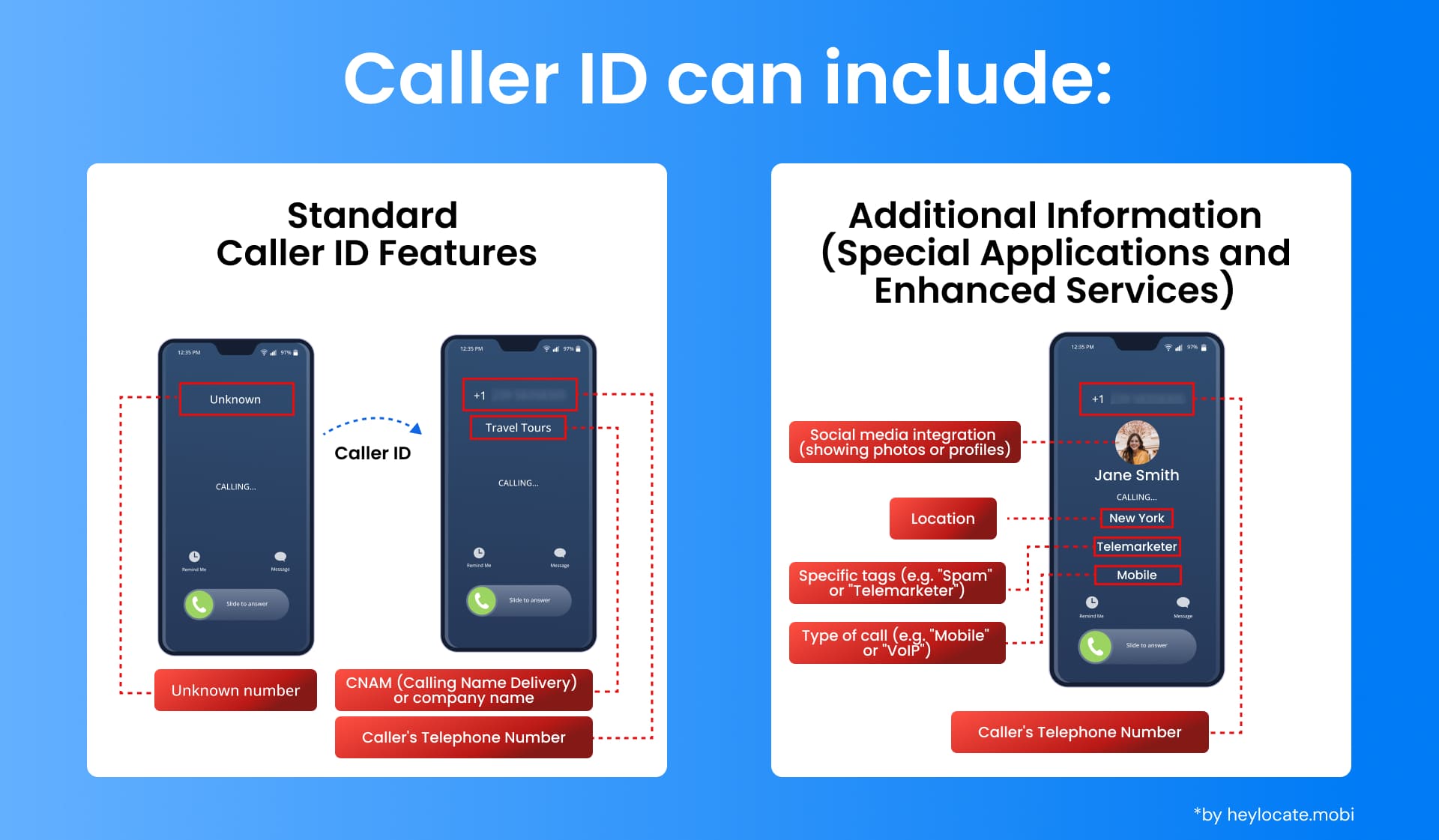Caller ID
What is Caller ID?
Caller ID is a telecommunication feature that shows the incoming caller’s telephone number and, at times, their name on the receiving device. It furnishes users with pertinent information about the caller before engaging with the call. The inception of this technology traces back to the 1960s, with its commercial availability emerging in the late 1980s.

Significance and Role in Society
Caller ID has profoundly influenced communication dynamics, empowering individuals to make informed decisions regarding call responses, sifting through undesired or unfamiliar numbers, and prioritizing crucial calls. It bolsters personal safety and security by enabling individuals to circumvent scams, harassment, and unsolicited solicitations. Moreover, businesses leverage Caller ID to discern customers, deliver personalized services, and augment overall customer satisfaction.
Technical Aspects of Caller ID
Caller ID functions by transmitting the caller’s telephone number and, when available, their name between the telephone exchange and the receiving device. This data accompanies the call setup information and is deciphered by the receiving device, enabling the user to ascertain the caller’s identity before answering the call.
The transmission and display of Caller ID information adhere to international standards, notably the International Telecommunication Union-Telecommunication Standardization Sector (ITU-T) Recommendation Q.731.3. Caller ID services encompass various iterations, including Calling Name Delivery (CNAM), Calling Line Identification Presentation (CLIP), and Calling Identity Delivery (CID), each offering distinct information levels and functionalities to users.
Caller ID information can be showcased on many devices, from telephones and Caller ID display units to smartphones. Users often wield control over the exhibited information, allowing them to tailor or obstruct their Caller ID information.

Caller ID and PBX Systems
Private Branch Exchange (PBX) systems, prevalent in corporate environments, may encounter compatibility hurdles with Caller ID. Configurations may necessitate adjustments to convey Caller ID information accurately. Centrex systems, administered by telecommunications companies, might similarly impose limitations or necessitate specific configurations to uphold Caller ID functionality.
Caller ID in Varied Telecommunication Milieus
Within Plain Old Telephone Service (POTS) lines, Caller ID information traverses the same copper wires utilized for voice communication. Users can block their Caller ID through the *67 code, preempting the display of their information to recipients.
Caller ID functionality within PBX systems furnishes greater flexibility and options compared to POTS lines. PBX systems can be tailored to relay Caller ID information from external calls to internal extensions, facilitating incoming call identification by employees.
Internet Telephony Service Providers (ITSPs) play a pivotal role in transmitting Caller ID information in Voice over IP (VoIP) systems, ensuring seamless transmission between the Internet and the Public Switched Telephone Network (PSTN).
The transmission of Caller ID information through cellular networks poses challenges owing to network intricacies and roaming scenarios, necessitating coordination between wireline networks and PSTN access carriers to ensure accurate Caller ID information display on mobile devices.
Caller ID Localization and Advanced Caller ID Services
Caller Line Identification (CLI) localization is a process of displaying local or recognizable numbers to heighten contact rates. Organizations like call centers, debt collectors and insurance companies often localize Caller ID information to foster trust and engagement among recipients.
Type II Caller ID, also dubbed Enhanced Caller ID, offers supplementary functionalities such as Call Waiting Deluxe, enabling users to view incoming caller information while engaged in another call.
Caller ID information can be transmitted in diverse formats, with number-only or name+number formats. The most common are the Single Data Message Format (SDMF) and Multiple Data Message Format (MDMF).
Legal and Ethical Contemplations
The legal requirements for sending Caller ID information, Caller ID spoofing and blocking vary in different countries. Still, most of such rules demand the transmission of Caller ID information and set penalties and enforcement measures for not following them.
Users have the option to block or unblock their Caller ID information based on their preferences. Callers can block their Caller ID by using specific codes or settings provided by their service providers.
References
- Tu, H., Doupé, A., Zhao, Z., & Ahn, G.-J. (September 2017). “Toward Standardization of Authenticated Caller ID Transmission”. IEEE.org.
- Deutsch, C. H. (December 10, 2006). “Calling All Cheats: Meet Your Enemy”. The New York Times. Retrieved September 21, 2022, from https://www.nytimes.com.
- Federal Communications Commission (FCC) – Caller ID Rules: Unwanted Communications: Robocalls, Caller ID Spoofing, Do-Not-Call Registry, and Junk Faxes
- AT&T – Understanding Caller ID: Get Info About Calls Using AT&T Caller ID – AT&T Wireless Customer Support